


Welcome to “Up Close and Personal.” For every interview I will be introducing a literary personality discussing their views and insights, as well as upcoming literary events around the world.
Today’s interview is with Cynthia Jaynes Omololu. She was born in New Jersey, but grew up in San Diego, California. She majored in English at U.C. Santa Barbara. The best part of her college was living in Scotland for a year.
She met some amazing people in Scotland who she still consider some of her best friends all these years.
She’s the author of two YA adult books: “When It's Six O'clock in San Francisco” and her latest novel “Dirty Little Secrets.”
Dirty Little Secrets is novel that deals with compulsive hoarding and its affect on a child's life.
The book tells the story of a girl forced to make an agonizing decision in this nicely realized page-turner. Sixteen-year-old Lucy has been painfully isolated from her peers for years, refusing to let anyone near her house lest they discover the towers of garbage and heaps of mold-encrusted dishes. This is a mind-blowingly intense novel.
Ms. Omololu’s leaves in Northern California with her husband and two sons.
E.I. Would you share some early self-reflection to give us a sense of who you were as a teenager? What were you like? Give your readers three “Good to Know” facts about your first job experience, the inspiration for your writing career, any fun details or anecdotes that would enliven your page. Also tell us about Cynthia Jaynes Omololu today -- the woman behind the author.
CJ Omololu: My two best friends in high school became cheerleaders and homecoming queens. I felt like I couldn’t compete with that, so I dyed my hair black and started hanging out with musicians downtown. I recently found my senior yearbook and there were two signatures in it, which didn’t bother me at the time, but now I find sort of sad.
I got my first real job as a junior in high school. It was working in City Hall in our small seaside town, doing administrative stuff. That first experience pretty much inspired me to not want to work in an office if I could help it in the future. I’ve been a lot of things (several of them office jobs) in my life before I discovered that I was actually good at something. I’ve worked for a travel agency, a weekly newspaper, a fashion designer, as a waitress and a barista before Starbucks existed. I spent my life looking for the job I have today.
E.I. What is it about the art form of writing YA novels entirely that enchants you, and gives you the enduring passion to continue in such a demanding profession?
CJ Omololu: I love writing about a time in my own life that was full of conflict and confusion. Those years are so formative, and it’s interesting to me that the people who look like they have it together in their teens don’t necessarily do the best as adults. The stories that come to me so far have all had teenage voices, so that’s what I write. The children’s and young adult writing community is so supportive, I can’t imagine doing anything else.
E.I. Please tell your young readers about your novel “Dirty Little Secrets.” What was it that sparked your imagination? What were your favorite aspects about this book?
CJ Omololu: I read a magazine article about adults who had grown up in hoarded homes and that got me thinking what their childhoods must have been like. I feel that all of the characters are multi-dimensional – I made a real effort to have Lucy’s mother seem like a real person and not just a monster.
E.I. How do you weave so much information while writing and creating the character ‘Lucy Anne Thompkins’ and yet you keep her so fast-paced and interesting? Did you work her out in advance, or did she evolve as you wrote the story?
CJ Omololu: Thanks for saying that! Lucy came to me pretty fully formed, although I found out a lot about her as I worked. I try to cut anything that doesn’t add something significant to the story.
E.I. You've created a cast of so remarkably captivating and really fun characters: Lucy, Joanna, Kaylie, Josh Lee, Sara and Phil that your readers definitely clamor for more; how did you decide what level of details your readers will accept? How does your creative process work?
CJ Omololu: I didn’t really think about that in advance – I guess I write the book that I’d like to read. When I come up with an idea, I let it stew for a month or two. When the characters start talking to me, I know it’s time to start writing. I use a very loose, 9 step outline (I’ve got a post on how I do that on my blog) and then just start writing. Fiction for me is just the process of writing down the ‘movie’ that is going on in my head, so I start writing with the first scene and go until it ends.
E.I. How did you pull in the reader into Lucy's life, living her life hour after hour as she deals with the tremendous hardships of her mother's hoarding and the tragedy that follows.
CJ Omololu: When I started the book, I wasn’t sure what the format would be, but I realized pretty quickly that it would take place in a short period of time. I basically just followed along as she dealt with what happened.
E.I. Have you witnessed hoarding in your life, but never thought of it as a disease until you wrote this novel? I’m sure your audience felt so bad for Lucy’s life. I know that this is fiction but in reality a child should never have to go through that.
CJ Omololu: Great question, and the answer is yes. We used to joke about the mess and all the belongings without understanding that it was a disorder that actually had a name. I didn’t grow up like Lucy did, but unfortunately, many kids have. I have the emails to prove it, and each one breaks my heart. I have a lot of resources on my website, including www.childrenofhoarders.com, which is one of the best places to start for someone who has a hoarding problem in the family.
E.I. Can you explain the difference between a packrat and a compulsive hoarder?
CJ Omololu: Semantics. Hoarder is a pretty recent term for what people used to call packrats. My test for hoarding is if the person can get rid of things, either by giving them away, recycling or just putting things in the trash then they’re probably going to be okay. If they always come up with excuses as to why things could be useful to someone, then they might have a problem.
E.I. Does a hoarder spends money on lockers or additional storage space, and is filling up their car with possessions because they've run out of room in the house?
CJ Omololu: Absolutely – that is classic hoarding behavior. I know one hoarder who has purchased three homes that are now full of possessions.
E.I. Are people born compulsive hoarders, or do they become them?
CJ Omololu: There is just starting to be a lot of research on this disorder, so there isn’t a clear picture of a typical hoarder at this point. There does seem to be an element of OCD that many hoarders show early in their lives. Contrary to what it might seem, hoarding can often come from perfectionist tendencies – they don’t want to get rid of things that might be useful in the future. Hoarding does seem to get worse as people get older or have a traumatic event happen in their lives like a death or divorce.
E.I. Do hoarders tend to collect different things, or are there commonalities among hoarders?
CJ Omololu: For a disorder that has been so secretive, hoarders do tend to collect similar things. If you watch the hoarding shows you will see a lot of newspaper and magazines, books, clothes and toys (even if they don’t have kids).
E.I. Do people ever go back and read the newspapers or magazines they've saved? Can you explain what it's called churning? Which I guess one of hoarders habits?
CJ Omololu: While I can’t speak for all hoarders, I doubt that most of them go back over newspapers and magazines. They tend to save them ‘just in case’ they might need them someday. Churning is when a hoarder is trying to deal with the mess, but they are really just moving items from one location to another – not actually getting rid of anything. They may start to tackle a stack of magazines, only to realize that they might need an article in every copy and end up stacking them somewhere else.
E.I. Some people hoard animals. Is that related to compulsive hoarding? Some people will say, "A stray came to my door, how could I turn it away?" It's the same kind of thing -- they think," Everything is important.
CJ Omololu: There is a similar disorder called animal hoarding where people collect dogs, cats and other pets, but I didn’t include that aspect of hoarding in my book. Hoarders tend to put an abnormal amount of emotional attachment to things, and animal hoarders do this to pets. Even though they may have many more animals than is safe or sanitary, they can’t part with any of them, even if they know they are going to good homes. I foster kittens for our local animal shelter. Every year we have about 20 kittens come through our house (in twos and threes) and each and every one is special, but when it’s time, we give them back to the shelter so that they can find their ‘forever’ homes.
E.I. What are some of the factors that can lead to someone becoming a hoarder? Are some people predisposed to collect things? Men vs. women, old vs. young, rich vs. poor?
CJ Omololu: Hoarding is one of the great equalizers. At this point, it does seem to affect more women than men, but we are just starting to get a better picture of the disorder. You don’t need money to be a hoarder – many hoarders love garage sales and dumpsters for their treasures.
E.I. How many years of research did you do about hoarders to make your novel realistic? How did you overcome these challenges?
CJ. Omololu: When I wrote the book back in 2008, there weren’t many TV shows on hoarding and it wasn’t talked about too much. Once I got the idea, I Googled ‘hoarding’ and found the website Children of Hoarders. Through that site, I found three women who worked very closely with me to get the details right. They would tell me stories and read parts of the book as I wrote to give me pointers. I’ve had people who grew up in situations similar to Lucy’s in my story tell me it was like I had a camera trained on their lives. That is the best possible compliment I can get.
E.I. And finally what’s next with Cynthia Jaynes Omololu? Can you give your fans a sneak peek about your upcoming book?
CJ Omololu: I’m just finishing a book that is very different from DIRTY LITTLE SECRETS – a bit lighter, with more romance. I felt like I needed a little break from such heavy subjects. I do have some more “issue” books waiting to be written, so I’ll probably come back to writing important issues soon. People can watch the blog at www.cynjay.blogspot.com for updates and news.
E.I. Ms. Omololu, Thank you for contributing to my blog. It has been a pleasure for me to get to know your work a little better. Would you like to end your interview with a writing tip or advice for young aspiring writers?
CJ Omololu: Thank you! It’s been great. People told me in high school that I was a good writer, but I really didn’t pay attention and I was well into adulthood before it even occurred to me to write books. If you love writing, keep at it and don’t be afraid to share your work with other writers. Almost every writer has several ‘practice’ books in a drawer somewhere (and those who don’t, we don’t talk to) so don’t give up if your first novel isn’t perfect. It’s a long learning curve, but the rewards are awesome.
Photo of Cynthia Jaynes Omololu courtesy of the author.
To learn more about Cynthia Jaynes Omololu, please visit her website
To purchase her books, please visit AMAZON and Barnes & Noble







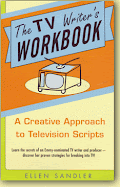



.png)



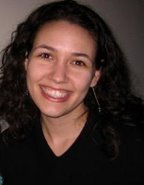
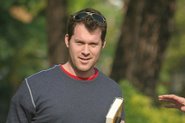

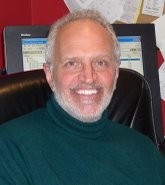
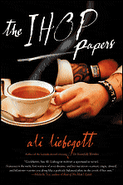

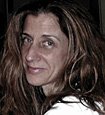
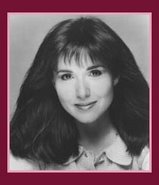






1 comment:
Hi...
Nice blog and you have done a great job with lot of creation and information.
Thanks
Post a Comment